MAINSPACE EXHIBITION /

Visual Poetics of Embodied Shame
Chun Hua Catherine Dong
January 8 – February 6, 2016
Visual Poetics of Embodied Shame examines the visual culture of shame in relation to the body, subjects and power in contemporary art. Over the past two years, Dong has been creating a series of works related to shame that integrates performance, photography, video, and installation. Her focus is exploring the visual culture of shame associated with vulnerability in its personal and socio-political dimensions, deconstructing the experience of shame through gestures, moments and audience participation. In her practice, she considers feminism, globalization and psychoanalysis, positioning shame as a feminist strategy of resistance—an ethical practice that seeks altered states of consciousness that possibly leads to restore dignity and humanity.

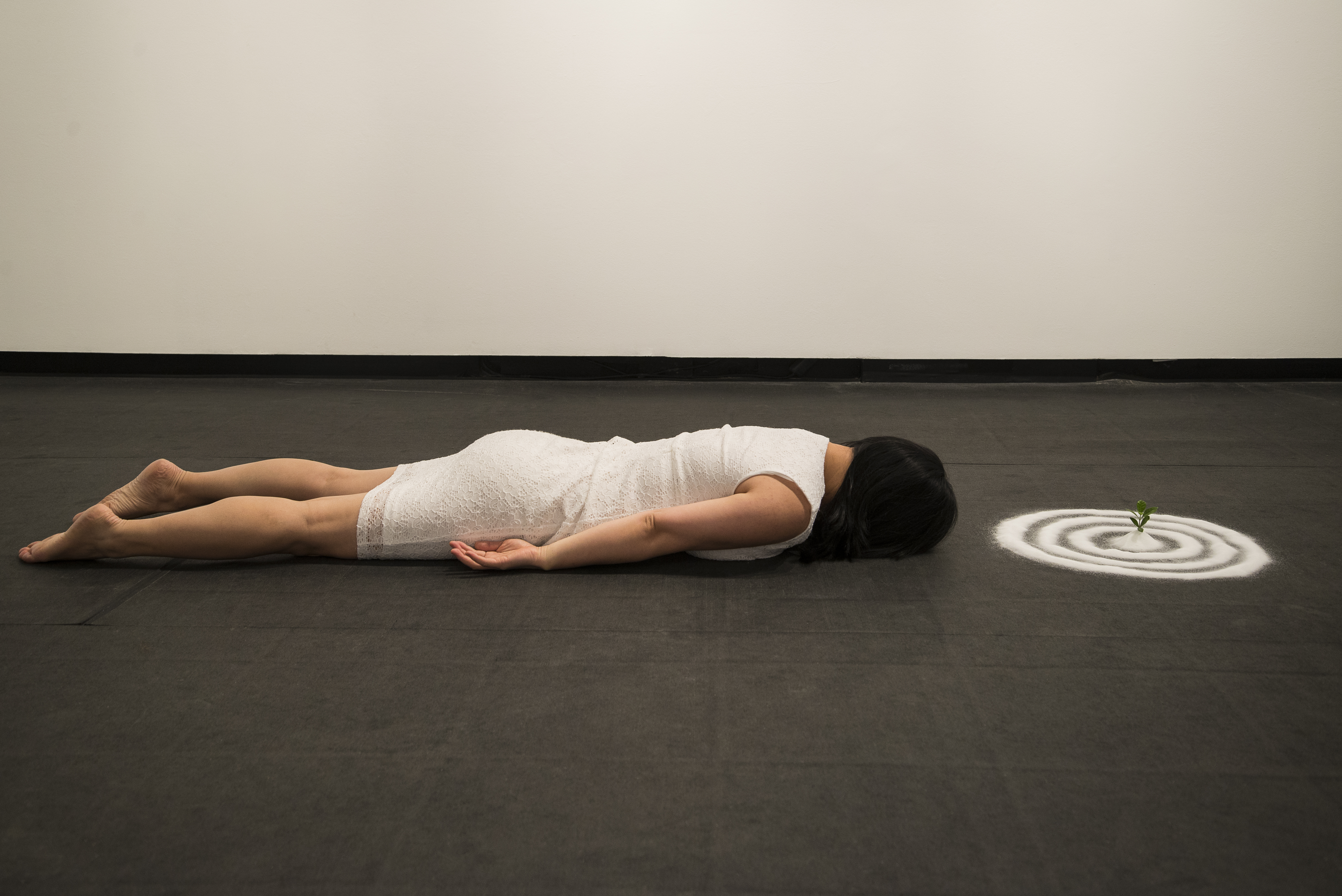
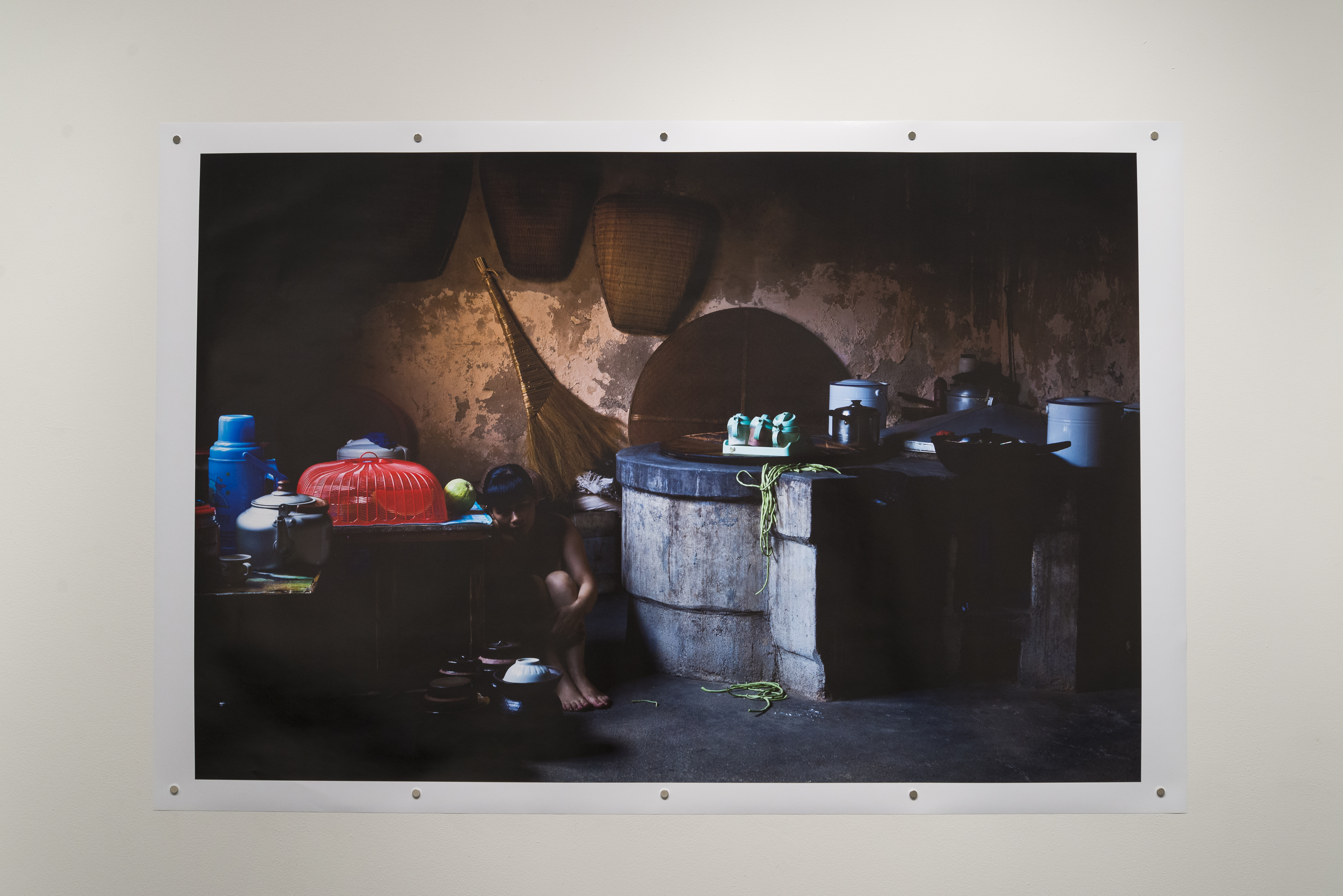
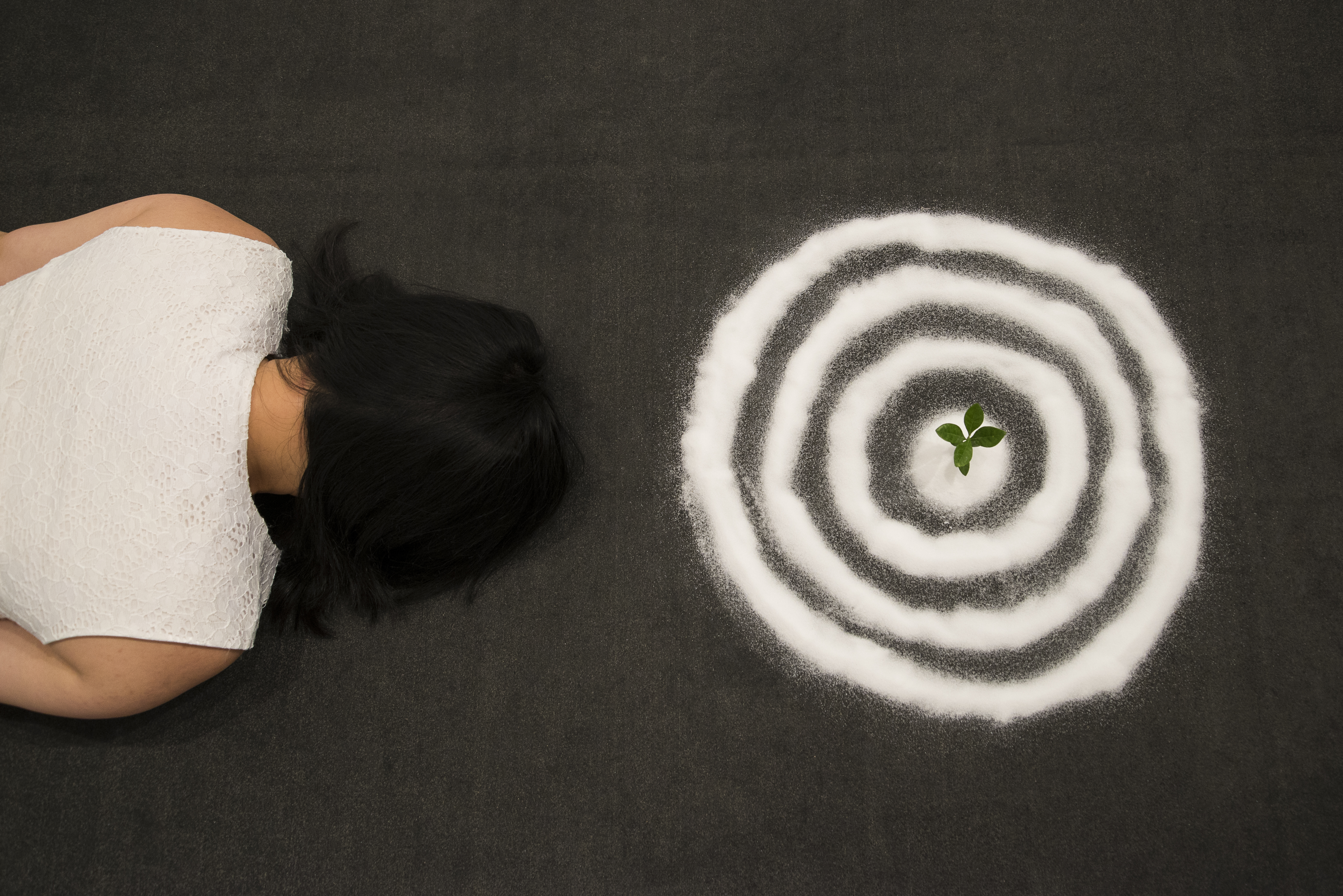
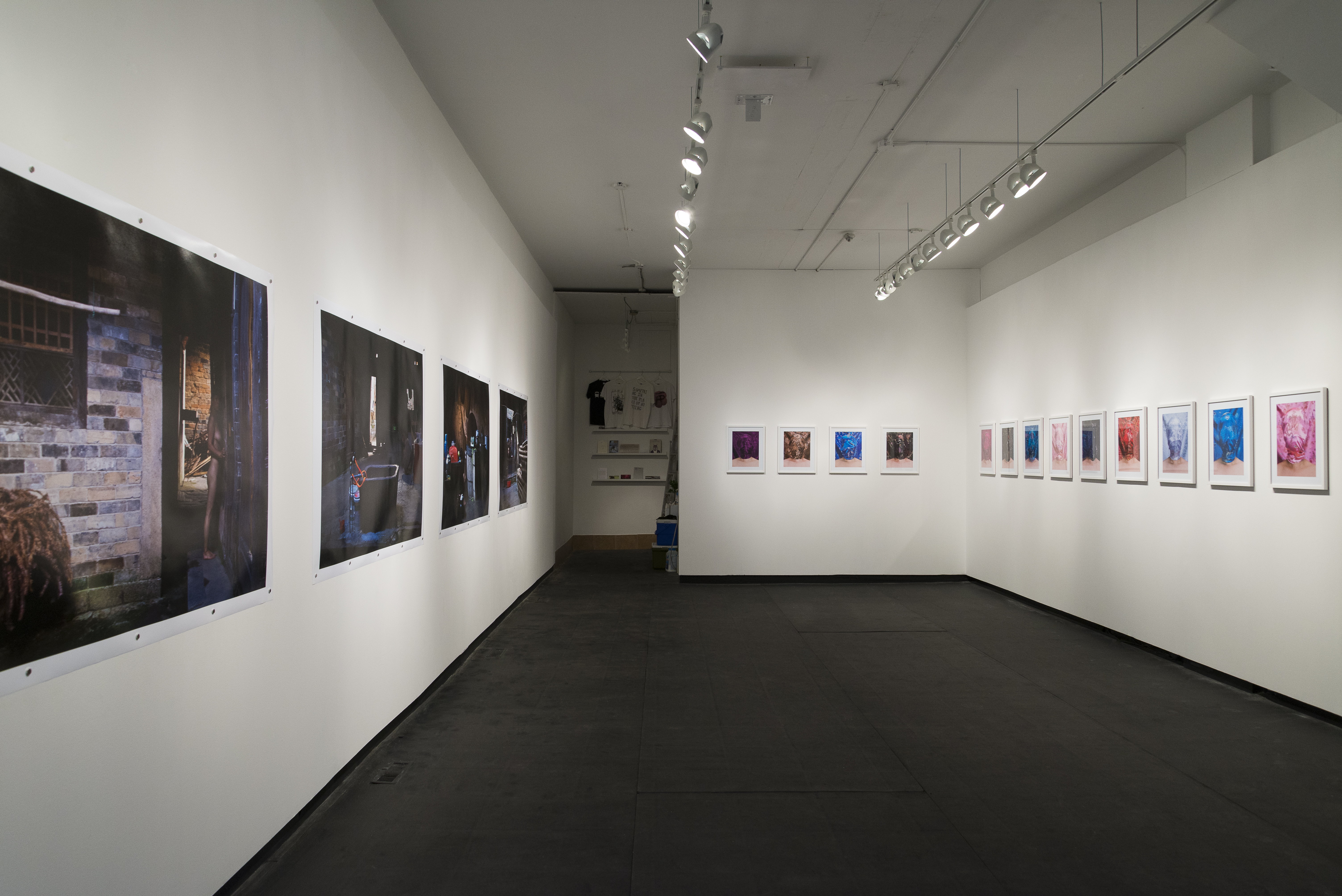

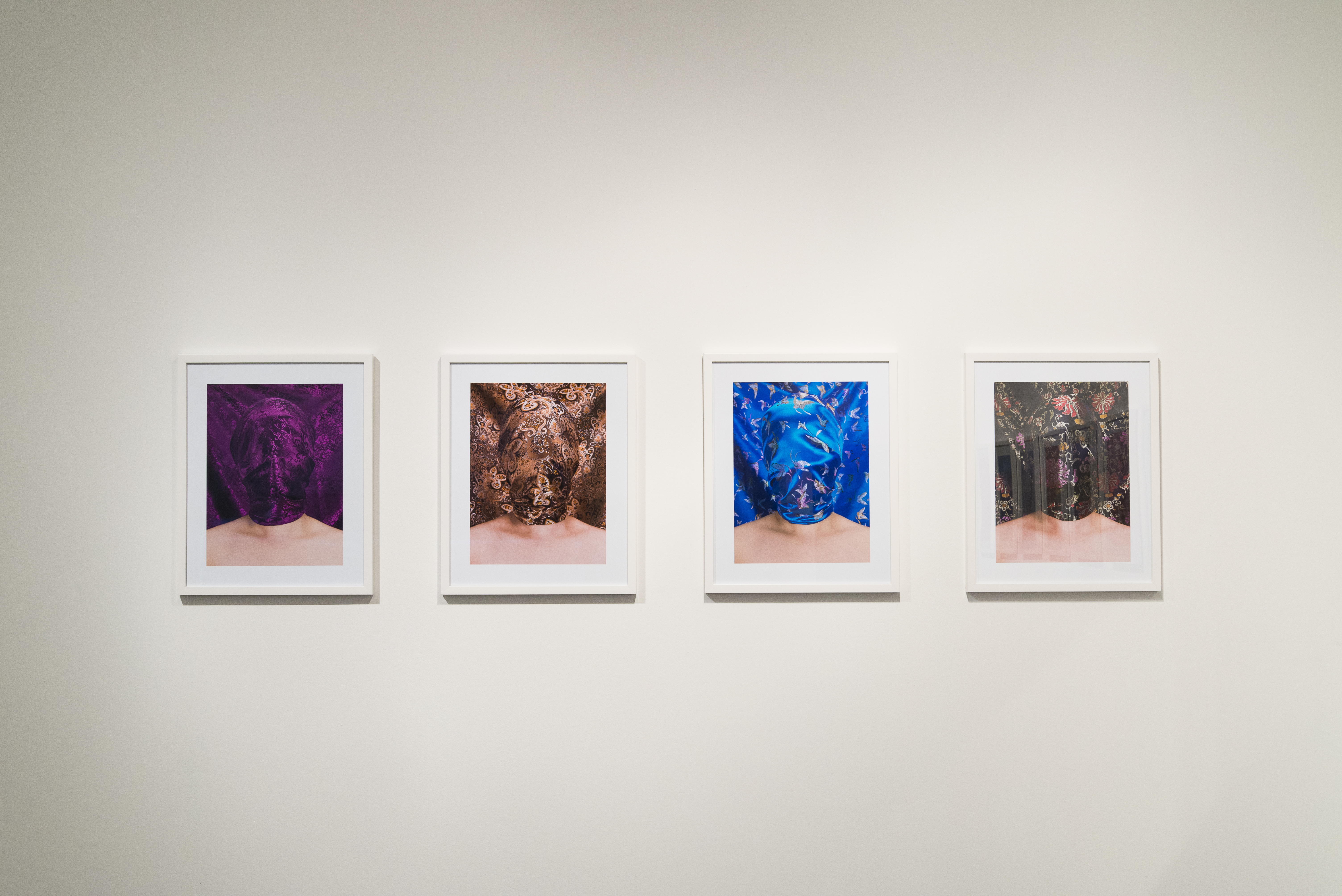
feeling in the dark:
the challenge of perceiving Chun Hua Catherine Dong’s Visual Poetics of Embodied Shame
If shame could be transmitted through touch, my fingertips would siphon the heat from your blushing face to be used as fuel – a uniform heat applied as evenly as a form-fitting Cheongsam dress. The kitchen fire blackens the walls with an overlay of soot, brocade darkness embroidered by the work of hands. Familiar objects palmed in an intimate, circular language. The various hungers inherent in bowls, bellies and breasts… Shadow hangs its receding curtain, casting a complex pallor on the cooled cheek of a returning ghost. Her presence is a hovering assertion. Bare skin emanates its own light in these dim interiors. It reverberates as echo and outline, a quietly disjunctive pattern of behaviour.
Chinese-Canadian performance artist Chun Hua Catherine Dong chooses to clothe and unclothe the instrument of her body in both subtle and shocking ways, mapping it as an embattled territory for the establishment and regulation of cultural identity and selfhood. A narrative of shame pervades the exhibition which features two significant series from Dong’s practice – Skin Deep and The State of Grace – each of which features the artist’s vulnerable body as the visual subject upon which socio-political forces are being perniciously exerted. Photography and video are utilized to explore this theme through the documentation of Dong’s thoughtfully transgressive actions, donning or shedding entire architectural structures as she does apparel – trying on the social dictates of inherited ancestry, gender and class in the complicated process of inhabiting her own skin.
Dong’s sense of personal agency is felt in the willful act of revisiting sites of her heritage and material culture, seeking a degree of immersion bordering on disappearance while somehow always standing radically in contrast as a result. It is as though the silhouette of the body is sealed shut within the isolation of its own form. So what do the permeable pores of our skin permit? How much of a place do we absorb/are we absorbed by? Do years of absence wash us clean or is trauma’s imprint still felt? The artist’s ungovernable body shuttles between parallel realities of the disowned and the reclaimed. What state of grace can be achieved in such a furtive manner? Grace is often understood as the appearance of fluid movement, navigating situations and spaces with apparent ease, demonstrating an effortless social aptitude in alignment with observed customs. Here Dong engages in an emergent game of hide-and-seek, referencing the etymological root of shame – meaning to cover. Concealment occurs in open rooms as the artist attempts to assimilate her adult self into her childhood haunts. A pronounced sexuality peeks out from these domestic tableaus, unbidden and incongruous.
Heat and pulse distinguish Dong’s vital presence in these remarkably still performances. Surface textures leap out of the photographs while the human body recedes – exercising the subtraction of shame by reversing the conventional figure-ground relationship. An entity manifests from the slanting shadows, a phantom of flesh, saddled with the all the faults and mature desires accrued over years of the artist’s absence abroad. The vessel of the body is routinely filled and emptied. The cost extracted through shame amounts to an emptying. Bathwater and timber – consumed by evaporation and smoke. The mortal body burns with its own urgencies, bright and brief. Dong shuns the suppressing effects of shame, projecting an attitude of self-possession, the armour of nakedness wrapped tightly around her.
Skin Deep substitutes a second skin. Traditional Chinese silk brocade is bound closely to conform around the contours of the artist’s face, obscuring her identity while also, in another way, affirming it. The slick surface of the fabric superimposes an embroidered field where we would otherwise find facial recognition cues. A matching background completes the effect of this unusual camouflage, arranged and repeated to mimic the conventions of a standard ID card format. Stylized flora and fauna writhe across the picture plane, unifying the face and the backdrop from the neck up – signifying Dong’s cultural heraldry short of identifying her personally. The result is a kind of negation of self. The artist has selected shades fabric across the colour spectrum, electing a palette that supersedes exclusive connotations of gender or race to communicate something more universal about the blanket effect of casting shame, the tonality of which colours us each in our own sense of personal failure and disgrace. Dong cites the concept of “losing face,” letting down one’s countrymen, family or self – a painful admission in an honour-bound culture. Breath infuses these otherwise claustrophobic images, as we perceive the artist’s shoulders rising and falling – the cyclical rhythm of respiration returning.
In The Visual Poetics of Embodied Shame, Dong implements her own body as a testing ground for the perception of shame. Her findings track phenomena as plain as a stamp on the forehead, as elusive as a blush dissipating from the cheek. As the artist states, “Maybe shame in this work has transformed itself into a visual symbol alive on my skin already. It knits difference into identity and identity into difference…” My own way into this subject initially has been to contemplate my lifelong relationship with a prominent vascular birthmark on my face, a physical blight which has morphed in my consideration of it over time. Its shape connotes a kind of personal cartography, mapping continents of departure. Capillaries bloom and burst forming alluvial ponds, blood rusting at its edges. Through this exhibition, Dong has redrawn her own biographical map. Borders dissolve inside the autonomous chambers of the heart.
– Jenna Swift
Biographies
Chun Hua Catherine Dong is a visual artist working with performance art, photography, and video. She received a M.F.A. from Concordia University and a B.F.A from Emily Carr University Art & Design. She has performed and exhibited her works in New York, Boston, Chicago, London, Delhi, Dublin, Helsinki, Moscow, Turin, Tornio, Toronto, Venice, Kaunas, Mannhein, Montreal, Vancouver, Calgary, Edmonton and so on. Her video work has been screened in Mexico, Germany, Italy, Ireland, Colombia, Spain, The Netherlands, Finland, Poland, Greece, Romania, Croatia, Denmark, Sweden, Scotland, USA, and Canada. Among many other awards, she is the recipient of the prestigious Franklin Furnace Award for avant-garde art in New York in 2014. Her performance is listed amongst the ”Top Nine Political Art Projects of 2010” by Art and Threat Canadian magazine. Dong now lives in Montreal.
Jenna Swift is an independent writer and artist, exploring themes of transience and ephemerality through site-specific installations and other collaborative projects. Language holds a sustaining fascination for her as she seeks to translate between the visual and the tangible. Past honours include a curatorial research internship at the Smithsonian Center for Folklife and Cultural Heritage and the Canadian Art Foundation’s Writing Prize.
